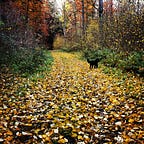Russians Seemingly Endless Variety Of Dumplings
Even if they seem the same, they’re not
--
One of the most common dishes from Russia is definitely dumplings. Mostly filled with meat, potatoes, or even fruits, there are many of them in different forms and sizes. Even if they might look somehow equal, their taste is not. As a person coming from Russia, I’ve eaten already lots of the different dumpling varieties, and I can say for sure their taste is not comparable with each other. Let me introduce you to the variety of the different dumplings, their dough, filling, and, of course, their taste.
Pelmeni
(Yeah, the name is a bit strange because in Russia you use the Cyrillic script, and it’s really hard to write Cyrillic names with our Latin script, so be prepared for some really strange names) Pelmeni are round-formed dumplings and one of the most simple and well-known dumplings from Russia. The dough consists out of four ingredients, water, egg, flour, and a bit of salt. You form small circles out of the dough, put on one a small amount of meat (mostly beef or pork) mixed with onion, garlic, salt, and pepper, and put another dough circle on top. Then you just connect the two dough parts and here you have your Pelmeni. After that, you have to boil them in some salted water or vegetable stock (alternatively you can also roast them, but boiling is the standard way). The most important ingredient inside the boiling water is laurel leaves. They give the water a special taste that goes perfectly with Pelmeni. You can eat them either plain or with some crème fraîche, for example. Their taste is comparable with normal dumplings, just with the small difference which was made by the laurel leaves. They give the Pelmeni their final aroma and without them, the taste will be really weak and unfinished.
Wareniki
Wareniki are crescent-shaped dumplings that are made out of the same dough as Pelmeni. The difference between both is, besides the size, the filling. While the filling of the Pelmeni consists out of meat, the filling of Wareniki consists out of potatoes, cabbage, fruits, or berries (you can fill them also with meat, if you really want to). You form, again, dough circles, fill them, and close them on one side by flipping one side on the other. Then you boil them in hot water and your Wareniki are ready to be eaten. Before you eat them, you spread some butter upon the dumplings. If you want to, you can eat them with some crème fraîche. Their taste varies depending on their filling, so I can’t tell you exactly how they taste. What I can say for sure is that their taste is not comparable with Pelmeni even though they’re made out of the same dough. Their taste is just a bit more vivid due to the vegetables or fruits you choose as filling. All in all, they taste great!
Pierogi
Pierogi have a thicker dough around them, which makes them in general a bit more solid. For the filling, you can use nearly everything, meat, potatoes, quark, fruits, and so on. After boiling them for a few minutes, they’ll have to be cooked. Again, you can eat them with some crème fraîche or some roasted onion if you want to.
Manti
Manti are quite big dumplings filled with meat. Special about them is that you cook them with a steam cooker, a pan with multiple layers with wholes in them. Inside this pan, there is a lot of hot steam which then cooks the Manti, which can take quite some time. After cooking them, they’re ready to be eaten and you can add some crème fraîche, tomato sauce, or yogurt. I’ve eaten Manti only once in my life and I can’t really remember, but there were really good and filling, after two of them, as far as I remember, I was already full.
Sotshniki
Sotshniki are sweet dumplings that are filled with quark. They consist out of yeast dough that needs quite some time to be ready to use. You add some sugar to the quark and fill the dumplings with it. They have crescent-shaped forms and one side is open, so you can clearly see the quark inside. After finishing with the forming of the dumplings, you put them for about 20 minutes inside an oven. They’re one of my favorite sweet dumplings and match well with some tea. The only sad thing about them is that because of their quite big size you’re often only able to make a small number of dumplings. Nevertheless, they taste really good!
(Note: I couldn’t find a good picture of real Sotshniki, but you can imagine them looking similar like the quark turnover in this photo)
These four dumplings above are only a small amount of the huge number of dumplings you can find in Russia, or better, in the region of the old soviet union. I just can’t talk about every single dumpling that comes to my mind, but I’ll try to explain two more in a shorter form:
- Aladushki: Imagine them as bigger/thicker pancakes, that don’t have to but can be filled.
- Coulibiaca: More looking like a long cake than a dumpling. Its filling consists out of fish, onion, eggs, dill, rice, and mushrooms, but the filling can, of course, vary.
And in total, these are the most popular dumplings you can find in Russia, Ukraine, Kasachstan,… Surely there are some more, but the most important ones are the ones you can find above. For some people, it might seem strange that the Russian kitchen is full of dumplings but even if that’s true, they are completely different dishes with different forms and tastes. Every dumpling has its own unique taste that makes it… well, unique. I hope I could make the different types of dumplings clear and maybe I could inspire you to try them!
